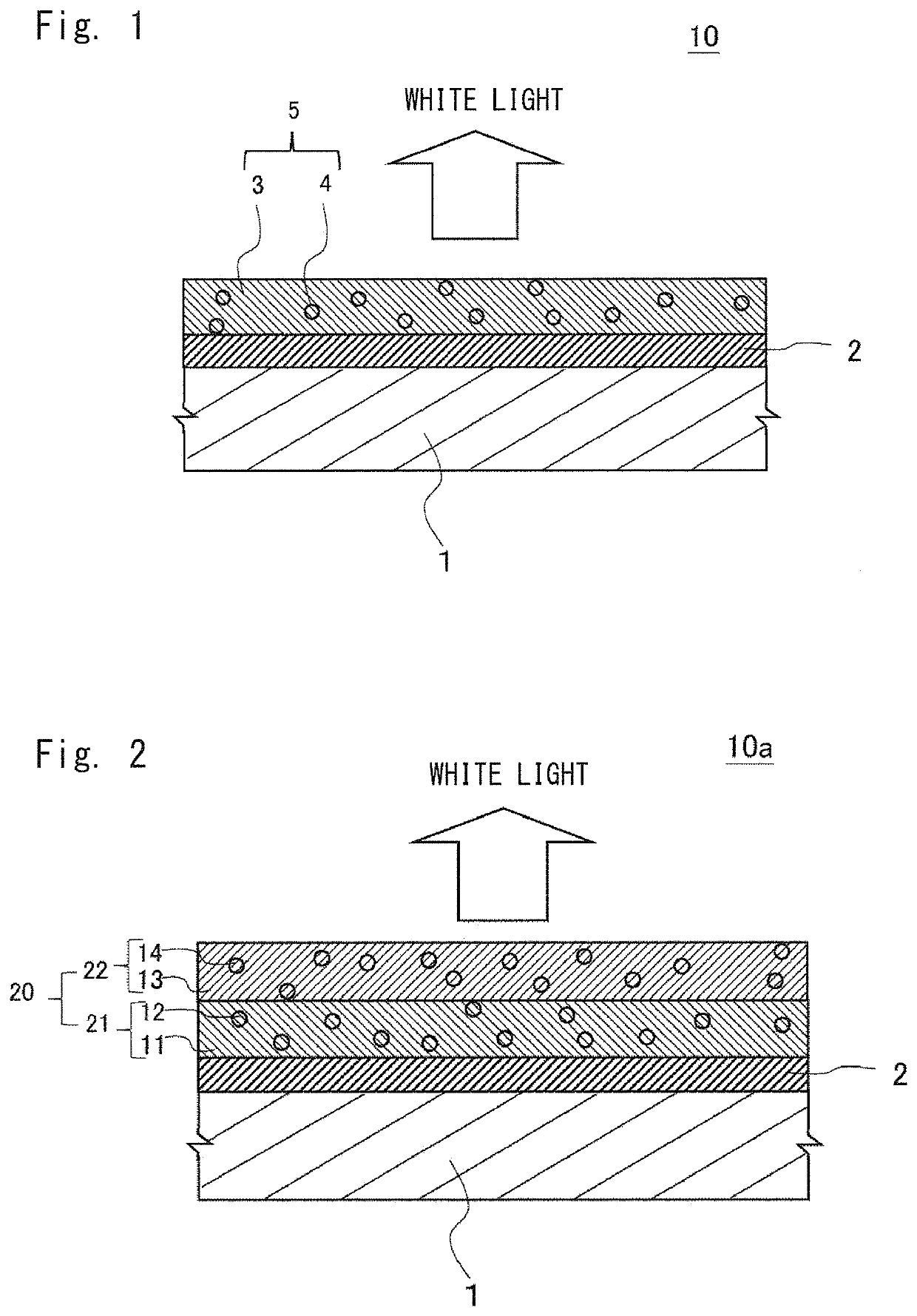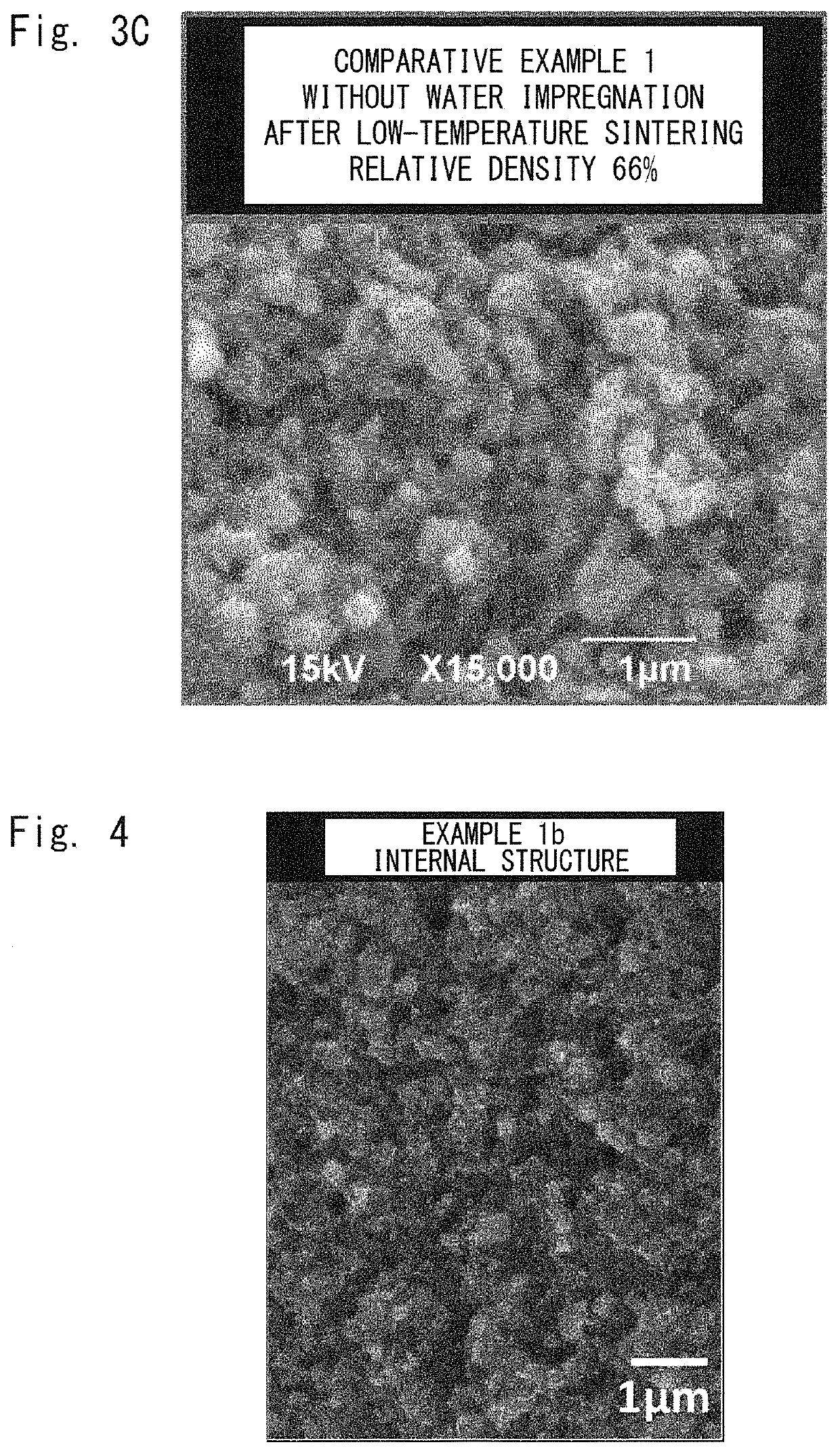Fluorescent member, its manufacturing method, and light-emitting apparatus
a technology of fluorescence and manufacturing method, applied in the field of fluorescent members, can solve the problems of low heat resistance, particularly serious problems, low thermal conductivity of resin (the matrix), etc., and achieve satisfactory fluorescent properties and thermal conductivity. good
- Summary
- Abstract
- Description
- Claims
- Application Information
AI Technical Summary
Benefits of technology
Problems solved by technology
Method used
Image
Examples
example
[0092]The present invention will be described hereinafter in a more detailed manner by using examples. However, the present invention is not limited to the below-described embodiments.
experiment example
[Experiment Example A] (Densification of Matrix Part)
[0093]A mixture of matrix powders was obtained by weighing DISPERMAG (Registered Trademark) TN-1 (average particle diameter 0.57 μm, manufactured by Tateho Chemical Industries Co., Ltd.) and PUREMAG (Registered Trademark) FNM-G (average particle diameter 0.54 μm, manufactured by Tateho Chemical Industries Co., Ltd.) as raw material MgO powders so that their mass ratio became 7:3, and mixing them by using a mixer. A pre-molded body was obtained by charging 1 g of this mixture of the matrix powders into a cylindrical stainless steel mold having a diameter of 15 mm, and performing primary molding at 50 MPa for 30 seconds by using a uniaxial pressure molding machine (Product name: Hydraulic Shop Press, manufactured by Woodward Fab).
[0094]Next, a preform was obtained by applying an isostatic pressure of 1,000 MPa at a room temperature for one minute. The relative density of the preform was 65%. The preform was impregnated with 10 mass ...
example 1a
[0096]A red phosphor (CASN manufactured Sialon Co., Ltd.) was further added as phosphor particles in the mixture of the matrix powders of the Experiment Example A. A phosphor particle-containing mixture was obtained by sufficiently mixing the raw-material powder and the phosphor particles in a mortar so that their volume ratio became 99:1. A preform was formed by charging 1 g of this phosphor particle-containing mixture into a mold in a manner similar to that for the Experiment Example A and performing similar processes under similar conditions to those in the Experiment Example A, and then a fluorescent member, which was a sintered body, was obtained therefrom. The relative density of the preform was 65%, and the relative density of the fluorescent member was 92%.
PUM
| Property | Measurement | Unit |
|---|---|---|
| thermal conductivity | aaaaa | aaaaa |
| mass ratio | aaaaa | aaaaa |
| temperature | aaaaa | aaaaa |
Abstract
Description
Claims
Application Information
 Login to View More
Login to View More - R&D
- Intellectual Property
- Life Sciences
- Materials
- Tech Scout
- Unparalleled Data Quality
- Higher Quality Content
- 60% Fewer Hallucinations
Browse by: Latest US Patents, China's latest patents, Technical Efficacy Thesaurus, Application Domain, Technology Topic, Popular Technical Reports.
© 2025 PatSnap. All rights reserved.Legal|Privacy policy|Modern Slavery Act Transparency Statement|Sitemap|About US| Contact US: help@patsnap.com



